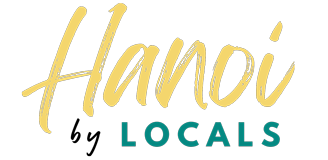Vietnam is a country rich in history and culture, having endured a tumultuous past marked by feudalism, colonialism, and war. Despite these challenges, the essence of Vietnamese tradition has persevered through its traditional villages, which serve as living testaments to the nation’s vibrant heritage. If you’re planning a trip to Hanoi, exploring these cultural villages is a must. Here’s a guide to some of the most fascinating traditional villages near the capital, each offering unique experiences that reflect the heart and soul of Vietnam.
Ban Yen Nhan Village – Unique Traditional Soy Sauce Village
- Location: About 25 km from Hanoi, in My Hao district, Hung Yen province. (Google Map)
- Highlight: Known for its rich soy sauce production, this village generates around 11 million liters annually and is celebrated in local poetry and music.
Ban Yen Nhan Village is renowned for its traditional soy sauce, a staple in many Northern Vietnamese households. The craft of soy sauce making has been passed down through generations, and visitors can witness the intricate process firsthand. The air is filled with the rich aroma of soy sauce as families engage in this age-old craft, making it a delightful stop for anyone interested in Vietnamese culinary traditions. The village’s history and the significance of its soy sauce, once a tribute to kings, add depth to your visit.
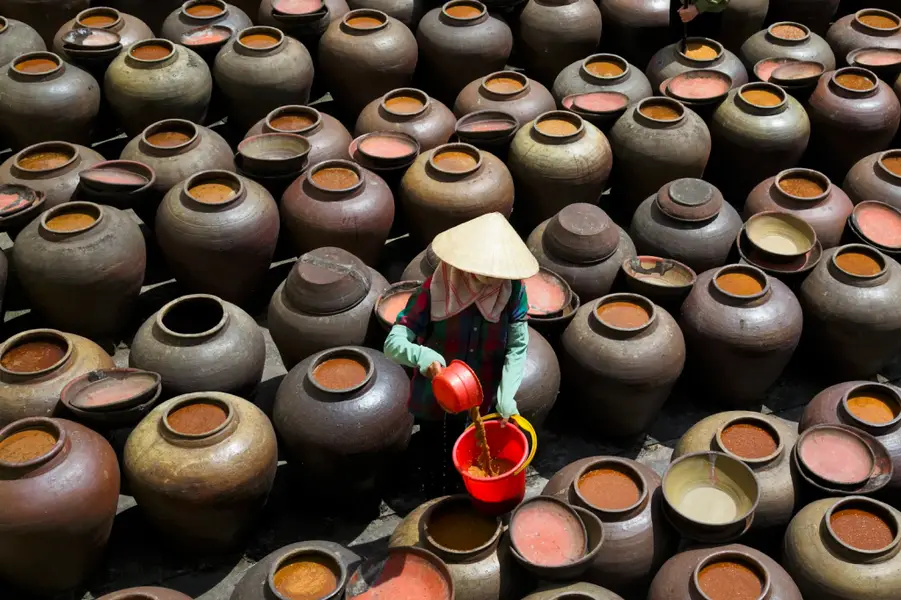
Yen Truong Village – A Historical Gem
- Location: Located in Chuong My, Hanoi. (Google Map)
- Highlight: Home to ancient relics from the time of the Hai Ba Trung, including beautifully preserved architecture and unique onyx stone wells.
Yen Truong Village is steeped in history, dating back to the era of the Trưng Sisters. The village features numerous historical relics, including intricately carved stone gates and ancient houses that showcase traditional Vietnamese architecture. Visitors can explore the serene surroundings, take leisurely bike rides along village paths, and engage in traditional craft workshops. The warm hospitality of the locals enhances the experience, allowing visitors to immerse themselves in the rich cultural heritage of this ancient village.
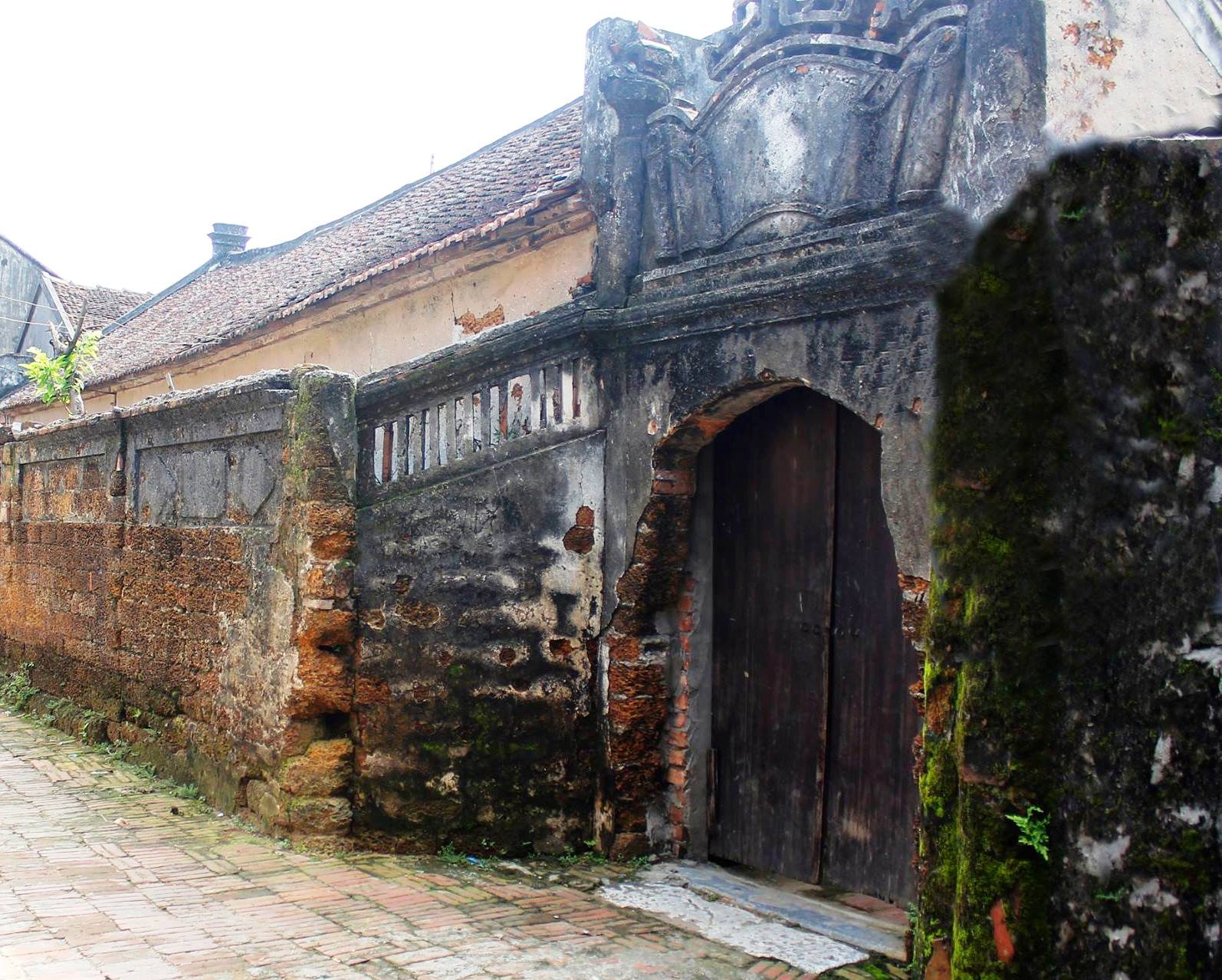
Uoc Le Village – The Sausage-Making Craft Village
- Location: In Tan Uoc commune, Thanh Oai District, Hanoi. (Google Map)
- Highlight: Famous for its traditional “gio lua” (Vietnamese pork sausage), Uoc Le offers culinary workshops and a glimpse into its 500-year-old heritage.
Nestled in the lush landscapes of Thanh Oai, Uoc Le Village is celebrated for its exquisite pork sausage. The village’s annual festival showcases the culinary mastery behind this beloved dish, and visitors can participate in workshops to learn the art of sausage making. The ancient village gate and the revered So Temple stand as testaments to the village’s historical significance. Uoc Le is not just about food; it’s a place where you can connect with the community and appreciate their deep-rooted traditions.
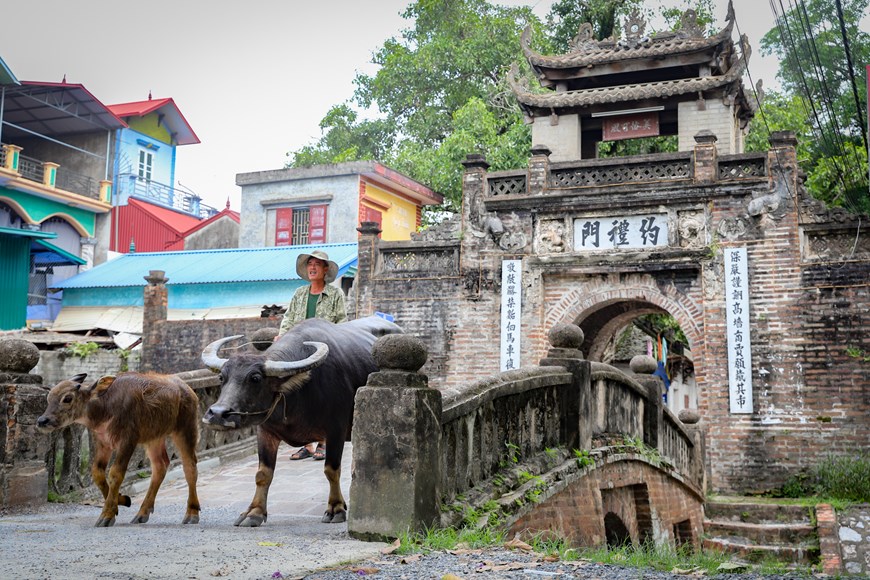
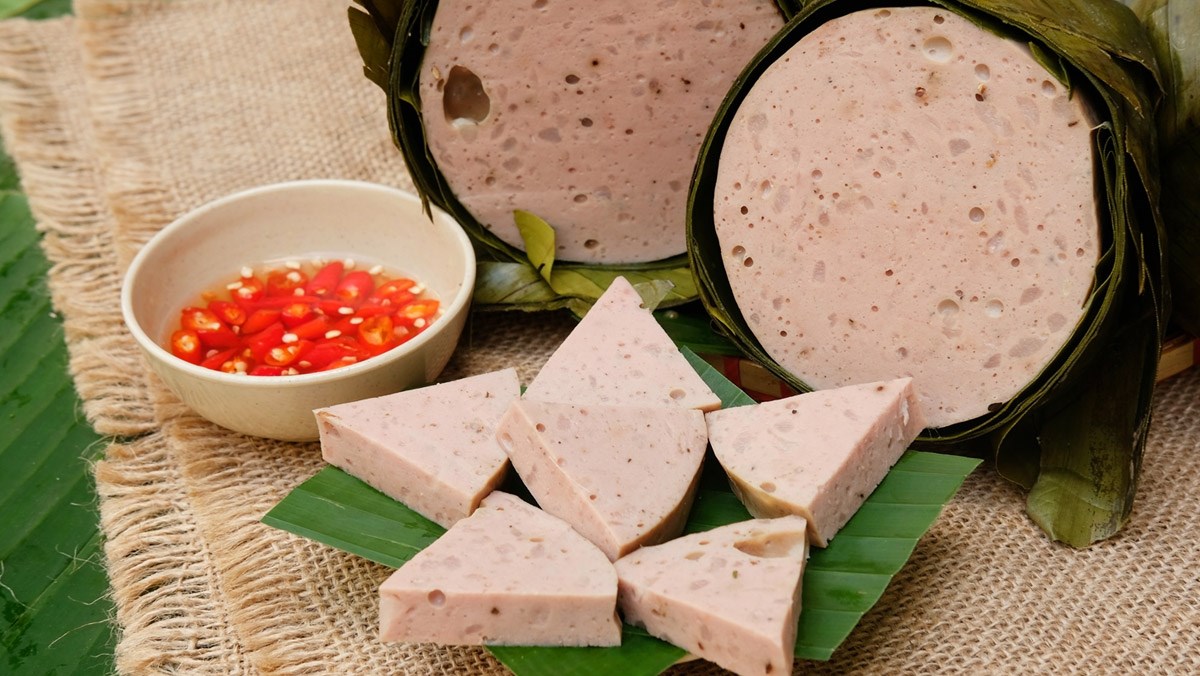
Cuu Village – The Tailor Village
- Location: About 40 km from Hanoi, in Van Tu Commune, Phu Xuyen District. (Google Map)
- Highlight: Known for its tailoring craftsmanship, Cuu Village offers visitors the chance to create custom garments and experience its rich history.
Cuu Village, often referred to as the “Tailor Village,” boasts a history of 500 years in tailoring. The village’s narrow alleys and smooth blue stone paths invite visitors to explore its picturesque charm. Here, you can have clothes tailored to your specifications, immersing yourself in the artistry and precision of local artisans. The tranquil atmosphere and the warmth of the villagers make Cuu a perfect getaway from the hustle and bustle of city life.
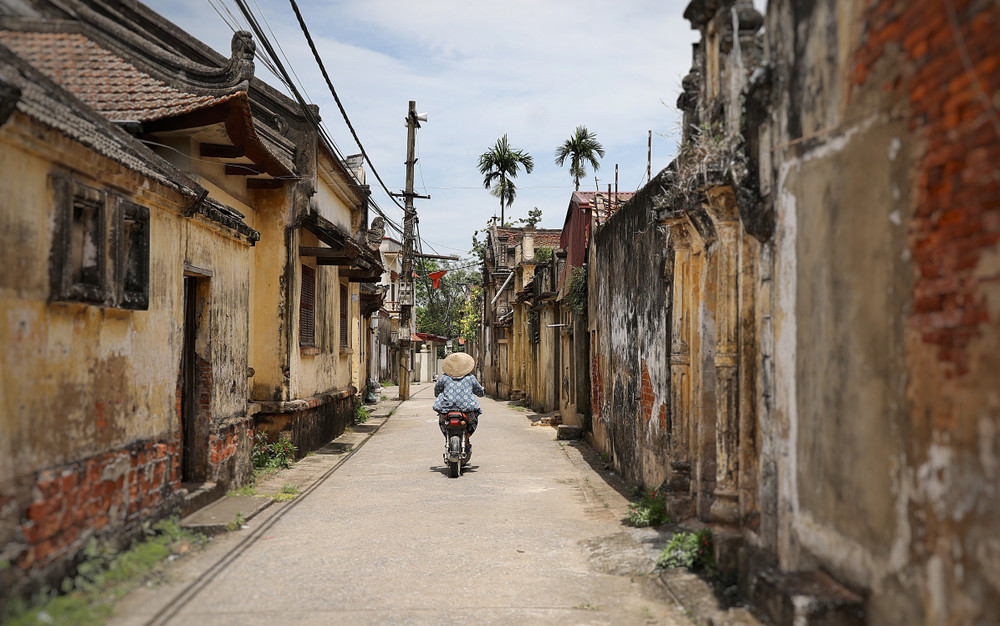
Cu Da Ancient Vermicelli Village
- Location: Near Hanoi, in Cu Da commune. (Google Map)
- Highlight: Known for its unique architectural style and the largest vermicelli production in the Northern Delta.
Cu Da Village is a blend of ancient architecture and culinary tradition, famous for its vermicelli production. The village features beautifully preserved French colonial buildings alongside traditional Vietnamese homes. Visitors can witness the vermicelli-making process and explore the village’s rich history through its communal houses and pagodas. The friendly locals are eager to share their stories, making your visit both informative and enjoyable.
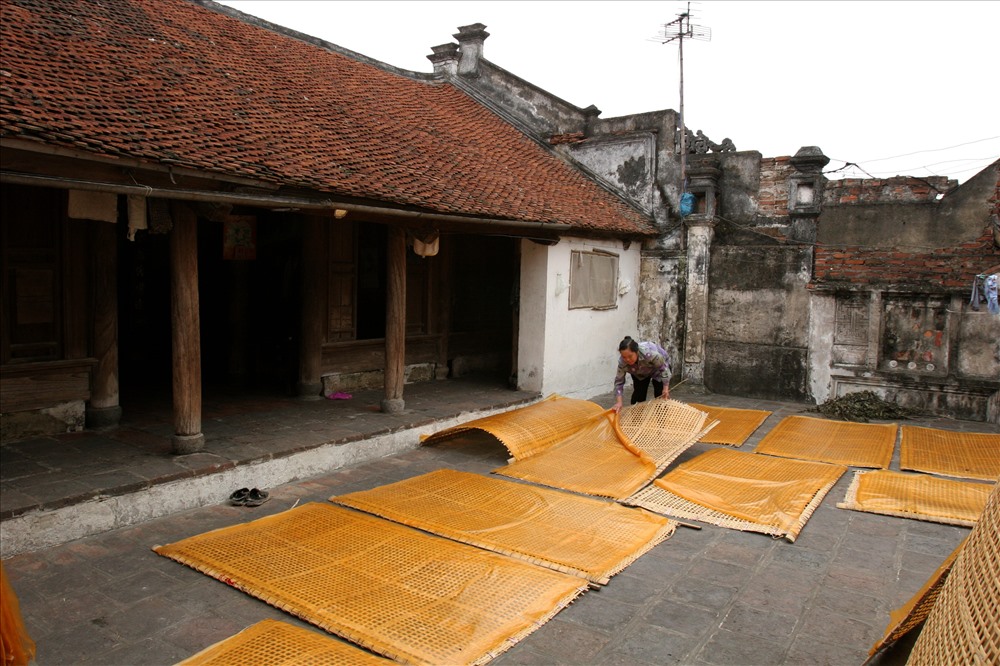
Chuong Conical Hat Village
- Location: West of Hanoi. Chuong Village, Truong Trung, Thanh Oai, Hanoi (Google Map)
- Highlight: This village is famous for its iconic conical hats, known as “non la,” which are a symbol of Vietnamese culture.
Chuong Village is synonymous with the traditional conical hat, a quintessential accessory for Vietnamese women. The craftsmanship involved in making these hats has been preserved over generations, and visitors can learn about the intricate process. The sight of artisans skillfully weaving bamboo leaves into beautiful hats is a captivating experience. Purchasing a conical hat from Chuong Village is not just a souvenir; it’s a piece of Vietnamese culture that you can take home.
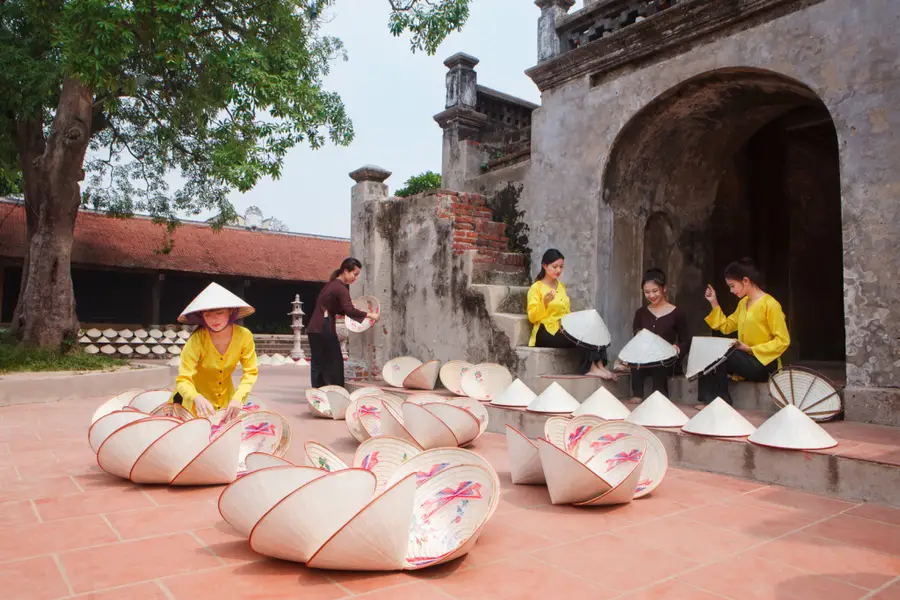
Dong Ho Painting Village
- Location: About 33 km east of Hanoi, in Bac Ninh province. (Google Map)
- Highlight: Famous for traditional folk wood carvings, especially during the Lunar New Year.
Dong Ho Village is the cradle of folk wood carving and painting in Vietnam. Visitors can explore the vibrant colors and intricate designs of Dong Ho paintings, which often depict rural life and folklore. The artistic process involves meticulous craftsmanship, and tourists can participate in workshops to create their own artworks. This village offers a unique opportunity to engage with Vietnam’s artistic heritage and take home a piece of its culture.
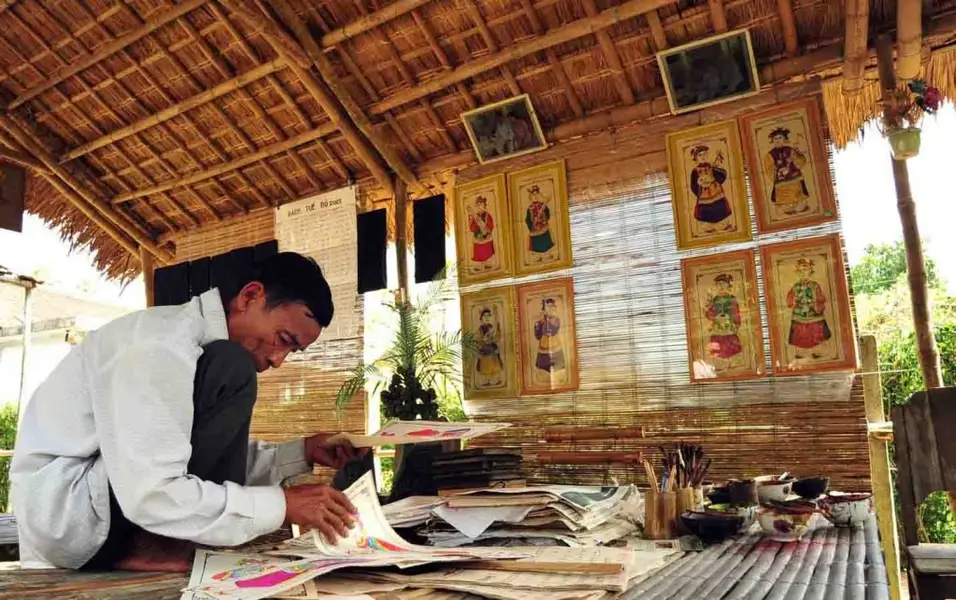
Chuyen My Village – The Pearl Inlaying Craft
- Location: About 40 km south of Hanoi, in Phu Xuyen district. (Google Map)
- Highlight: Known for its intricate nacre mosaic products, Chuyen My showcases the artistry of pearl inlaying.
Chuyen My Village is renowned for its exquisite pearl inlaying craftsmanship. Visitors can watch artisans at work, creating stunning mosaic patterns from natural shells. The village’s rich history dates back centuries, and the craftsmanship has been passed down through generations. A visit here allows you to appreciate the delicate artistry involved and perhaps even try your hand at creating your own piece.
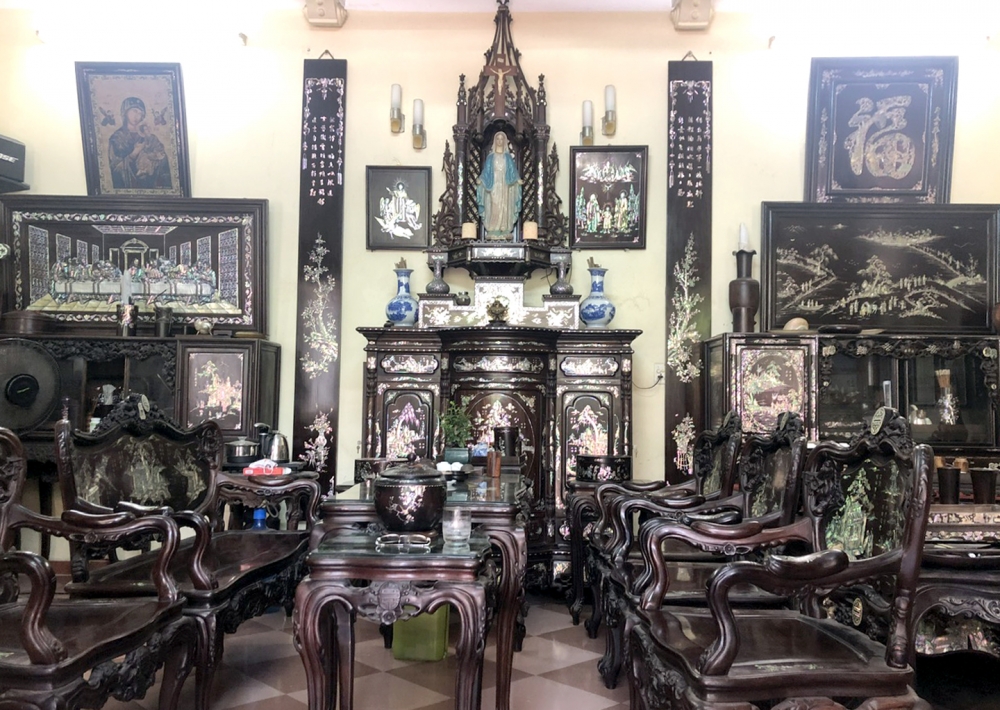
Phu Lang Pottery Village
- Location: About 60 km northeast of Hanoi, in Que Vo district, Bac Ninh province. (Google Map)
- Highlight: This village is famous for its traditional pottery, making it a must-visit for art enthusiasts.
Phu Lang Village is one of the last remaining pottery villages in Northern Vietnam. The village’s serene atmosphere and beautiful pottery make it a perfect destination for those interested in traditional crafts. Visitors can explore the pottery-making process and even create their own ceramic pieces. The charming landscape and the friendly locals add to the village’s allure, making it a memorable stop on your journey.
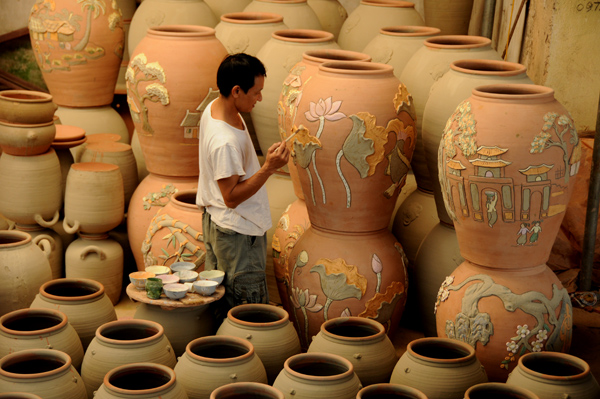
Duong Lam Ancient Village
- Location: About 40 km west of Hanoi, in Son Tay Town. (Google Map)
- Highlight: This ancient village features well-preserved houses dating back over 300 years and offers a glimpse into Vietnam’s rich history.
Duong Lam Village is a historical gem, recognized as the first ancient village in Vietnam. With its stunning architecture and traditional houses made from laterite, the village provides a fascinating insight into Vietnamese culture. Visitors can stroll through the village, visit communal houses, and explore the unique landscape that reflects the essence of rural Vietnam. Duong Lam is an ideal place for history buffs and those looking to connect with Vietnam’s past.
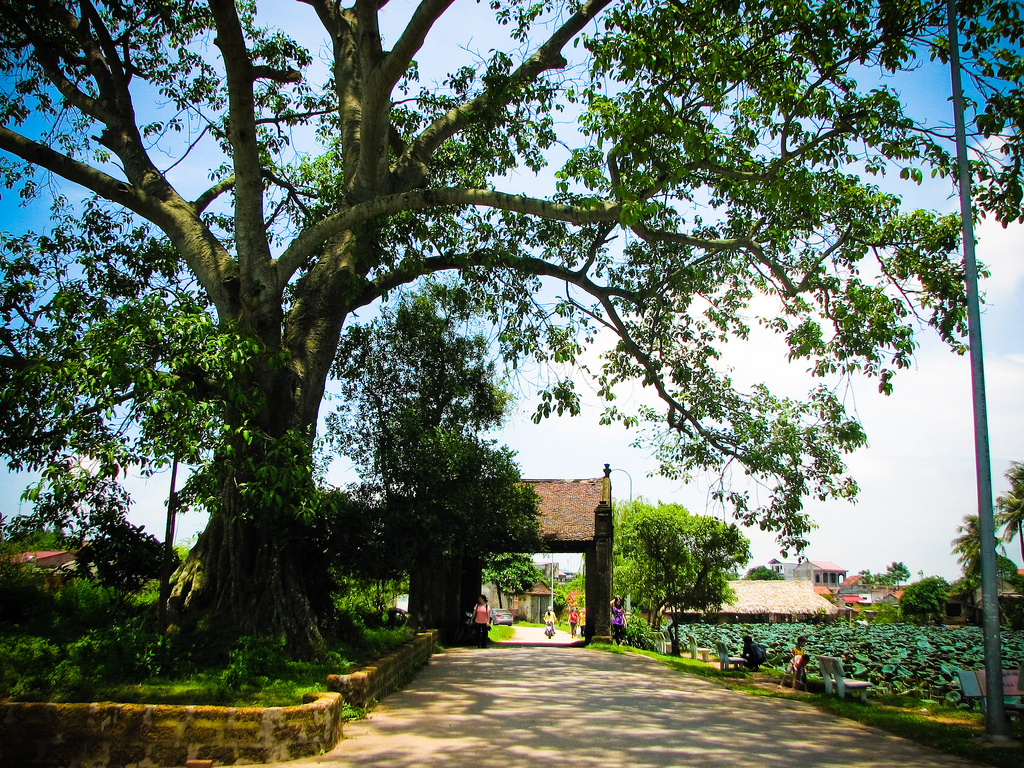
Thach Xa Bamboo Dragonfly-Making Village
- Location: About 30 km west of Hanoi. (Google Map)
- Highlight: Known for its charming bamboo dragonflies, Thach Xa offers a unique cultural experience.
Thach Xa Village is famous for its bamboo dragonflies, a delightful craft that has gained popularity among tourists. Visitors can learn how to make these whimsical toys and appreciate the skill involved in their creation. The village’s friendly atmosphere and the simplicity of rural life provide a refreshing escape from the city. This hands-on experience is perfect for families and anyone looking to engage with local artisans.
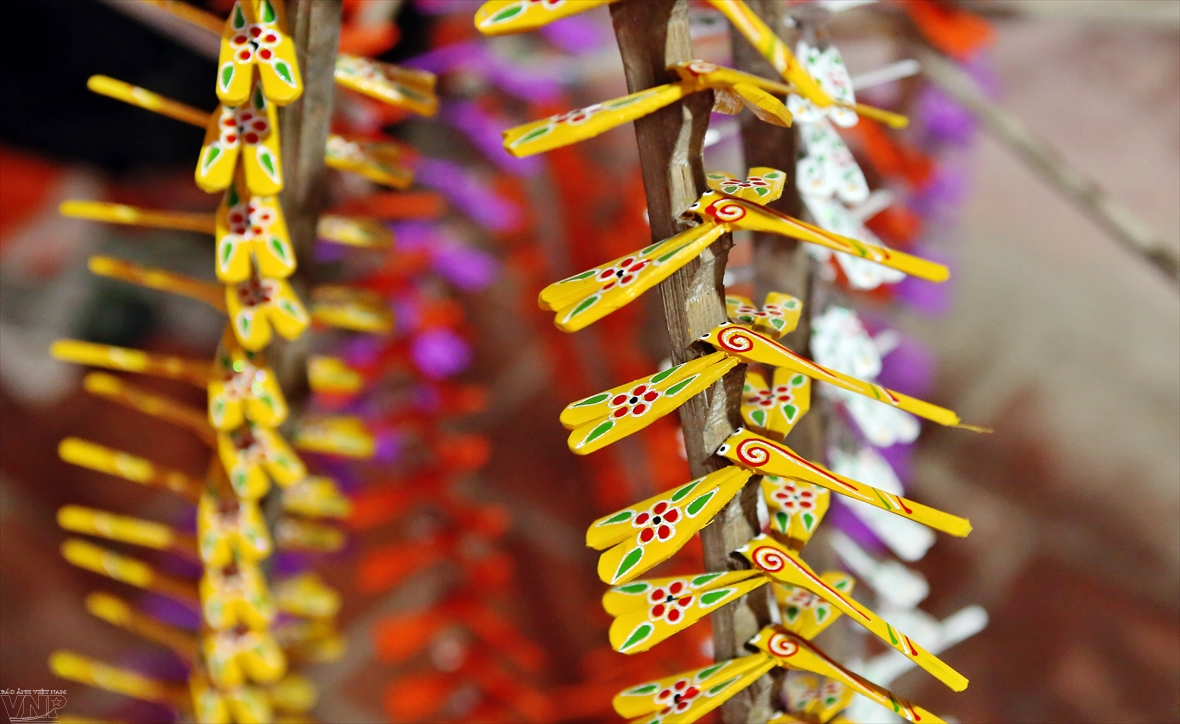
Dong Ngac Ancient Village
- Location: Located at the foot of Thang Long Bridge, about 10 km from central Hanoi. (Google Map)
- Highlight: Known as the “doctor village,” Dong Ngac features ancient houses and a rich history in education and craftsmanship.
Dong Ngac Village is steeped in history, known for producing many scholars in ancient Vietnam. The village boasts a blend of traditional and colonial architecture, with ancient houses that have stood the test of time. Visitors can explore the village’s unique handicrafts and enjoy a cup of tea while soaking in the tranquil ambiance. This village offers a perfect blend of history, culture, and community spirit.
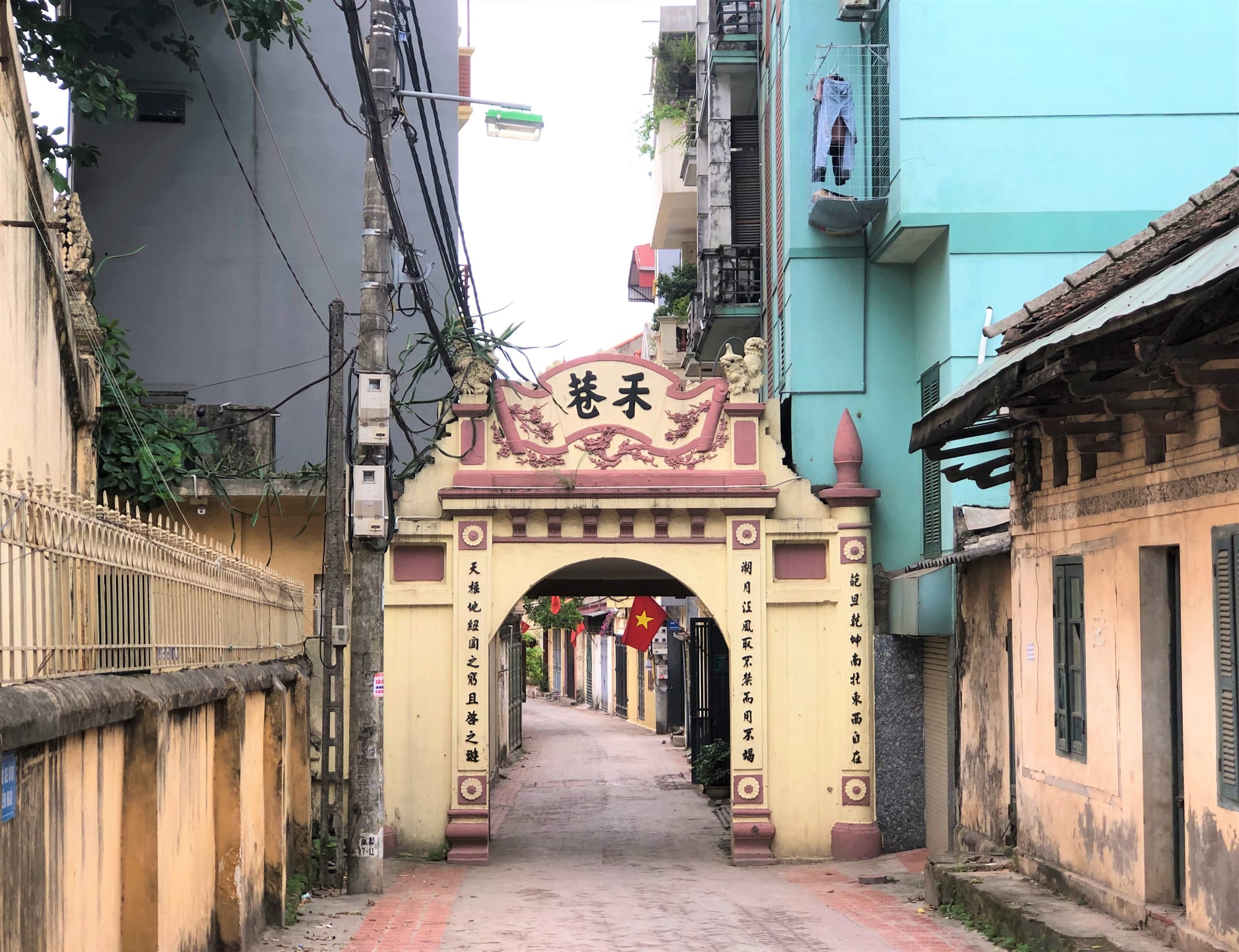
Bat Trang Ceramic Village
- Location: Approximately 13 km southeast of Hanoi. (Google Map)
- Highlight: Famous for its high-quality ceramics, Bat Trang is a must-visit for pottery enthusiasts.
Bat Trang Village is a vibrant hub of ceramic craftsmanship, known for its exquisite pottery and unique designs. Visitors can explore the workshops, watch artisans at work, and even try their hand at pottery making. The village’s rich history and artistic heritage make it a fascinating destination for anyone interested in traditional crafts. Bat Trang’s charming streets and artistic spirit are sure to leave a lasting impression.
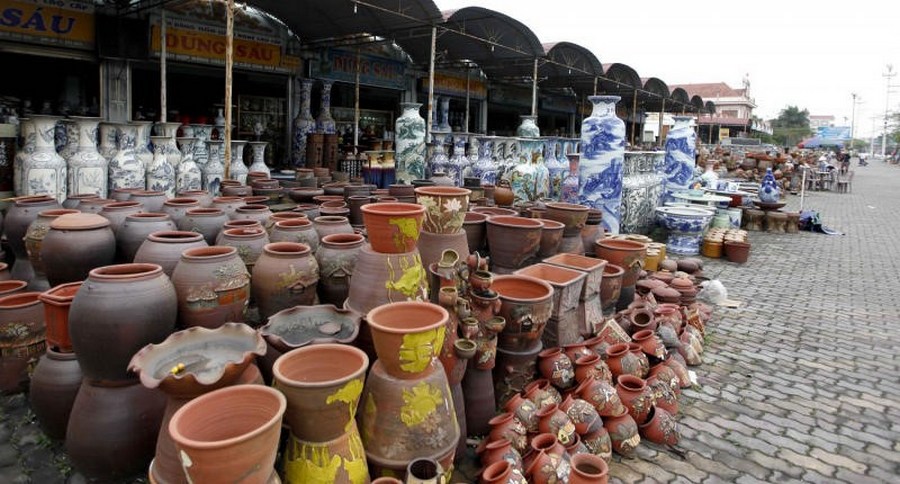
Exploring these traditional villages near Hanoi offers a unique glimpse into Vietnam’s rich cultural tapestry. Each village has its own story to tell, making them perfect destinations for travelers seeking authentic experiences. Whether you’re interested in culinary delights, artisanal crafts, or historical insights, these villages provide a captivating journey through Vietnam’s heritage.
